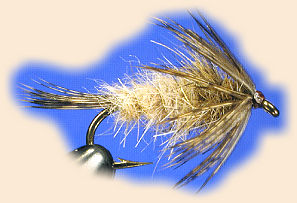For fishing deep or fast currents where the fish are feeding
on the bottom you have to get your fly to their level. Split
shot alone will not always work to hold the fly at the proper
depth so many times it's necessary to tie weight into the fly
as well. In shallow-water conditions, a weighted wet-fly can
also be fished by itself without split shot. This demonstration
will show the procedures to tie a weighted Orange Hare Thorax
Nymph. This fly has a shorter hackle collar extending only to the
hook point and can be classified as what Leisenring referred to
as a short-hackled thorax nymph.
Materials Orange Hare Thorax Nymph
Hook: Mustad 3906B, size 12.
Thread: Brown 6/0.
Underbody: .015 lead wire.
Tail: Grouse.
Abdomen: #5 hare's mask mixed with
pink Antron .
Ribbing: Gold wire.
Thorax: #2 hare's mask mixed with pink Antron.
Hackle: Grouse.
Method Orange Hare Thorax Nymph
1. Cut a two-inch section of lead wire from the spool.
Wind the wire tightly without gaps around the hook to
cover the front half of the shank. Trim the excess and
slide the wire over the thorax position.
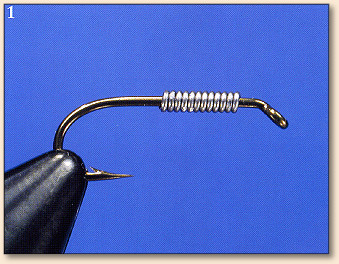
2. Start the thread behind the eye. Cover the shank with
thread binding the wire to the hook. Create a smooth thread
taper on both sides of the weight. Wrap the thread back to
the bend. Tie in the grouse fibers to build a tail. Then tie in the
gold wire for the ribbing.
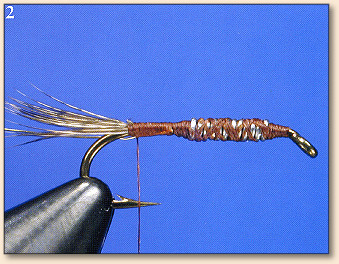
3. Wax the thread and dub an abdomen of #5 hare's mask fur
mixed with about 15% pink antron dubbing. Then counter-wrap
and trim the gold wire.
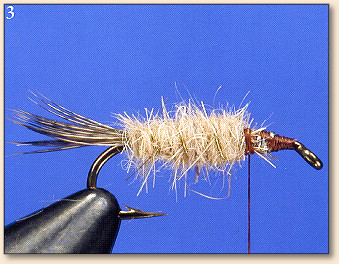
4. Dub the thorax using #2 hare's mask mixed with 10% pink
Antron dubbing and tie in a grouse back feather by the tip. Size the
feather so that the hackle collar extends to the hook point.
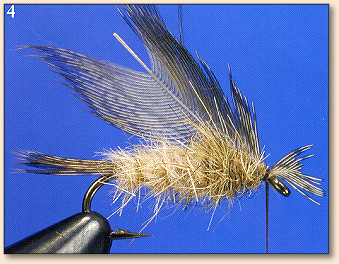
5. Wrap the feather to form the desired hackle collar. Trim the feather stem.
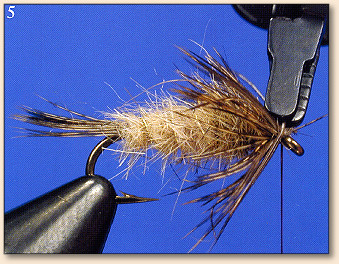
6. Build a thread head, whip finish and apply head cement.
The hackle collar may be fine-tuned by trimming any errant
fibers with a sharp pair of fine-tipped scissors or by plucking
the fibers out with your fingers. Trim them as close as you can
to the fly.
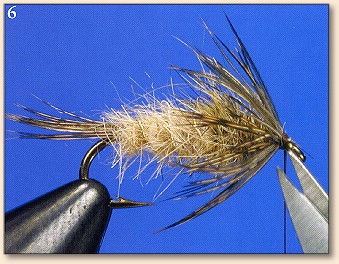
7. For a buggier fly pick out some fibers from the abdomen
and thorax with a bodkin.
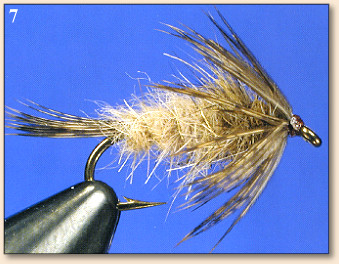
As indicated there are many methods that can be used in tying
the soft-hackled nymphs and flymphs. You can strictly tie them
using a traditional approach or you can tie them using modern
fly-tying techniques. But I suggest that you learn to tie the flies
using all of these methods and then see which ones you like the
best, or should I say see which ones the trout like the best. Even
after you have found the ones you prefer keep experimenting. Be
creative. Try combining the best traditional methods with the best
modern ones, even one's of your own design. Soft-hackled wet flies
have been around for a long time. Their history has seen many
variations on strategies used to fish them and on new techniques
for their creation at the vise. I hope you will continue that legacy
and carry these patterns in your arsenal of flies because they scream
to be fished as soon as you take that last wrap of thread. ~ Allen
Credits: From Tying and Fishing Soft-Hackled Nymphs
By Allen McGee. Published by Frank Amato Publications.
For more great flies, check out:
Beginning Fly Tying,
Intermediate Fly Tying and Advanced
Fly Tying.

